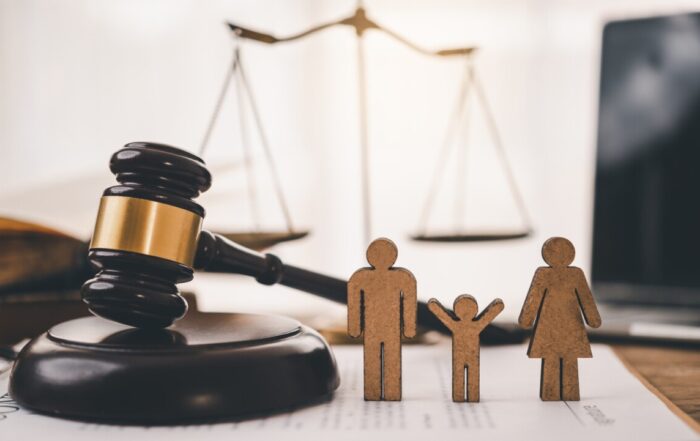Legal Definition of Harassment: A Complete Guide
Ready to resolve your legal concerns? Get professional help now with personalized support, Or Call 833-349-4659 for immediate assistance.
Harassment is a serious issue that affects many people in different settings, including workplaces, schools, and public spaces. Knowing the legal definition of harassment can help you recognize when it happens and take the right steps to protect yourself or others. Below, we break down everything you need to know about harassment from a legal perspective.
What Is the Legal Definition of Harassment?
The legal definition of harassment varies slightly depending on the state, but generally, it refers to unwanted behavior that is offensive, threatening, or creates a hostile environment. Here are the key points that define harassment legally:
-
Unwanted Behavior: Harassment involves actions or words that are not welcome. This can include repeated comments, jokes, or physical contact that make someone uncomfortable.
-
Offensive Nature: The behavior must be severe or pervasive enough to create an intimidating, hostile, or abusive environment.
-
Protected Characteristics: In many cases, harassment is illegal when it is based on race, gender, religion, age, disability, or other protected categories under anti-discrimination laws.
-
Impact Over Intent: Even if the harasser did not mean to offend, the impact of their actions matters more in legal cases.
Harassment can take many forms, including verbal, physical, or online behavior. Understanding these elements helps determine whether an incident qualifies as illegal harassment.
Types of Harassment Recognized by Law
Different types of harassment are recognized under U.S. law. Here are the most common forms:
-
Sexual Harassment
This includes unwelcome sexual advances, requests for sexual favors, or other verbal or physical conduct of a sexual nature. It often occurs in workplaces but can happen anywhere. Examples include inappropriate comments, unwanted touching, or sharing explicit images. -
Workplace Harassment
Any form of harassment that happens at work, whether based on sex, race, religion, or other protected traits, can be illegal. Employers are required to prevent and address workplace harassment under federal laws like Title VII of the Civil Rights Act. -
Cyber Harassment
With the rise of technology, harassment has moved online. Cyber harassment includes sending threatening messages, spreading false rumors, or posting private information without consent. Many states have laws against cyberbullying and online harassment. -
Discriminatory Harassment
This occurs when someone is targeted because of their race, religion, gender, age, or disability. Discriminatory harassment can create a hostile environment and is prohibited under federal and state laws. -
Stalking
Repeated, unwanted attention that causes fear can be considered stalking, which is a criminal offense. This includes following someone, sending excessive messages, or showing up uninvited at their home or workplace.
Each type of harassment has specific legal consequences, and victims have the right to take legal action.
How Harassment Differs from Assault
While harassment and assault are both harmful behaviors, they have different legal definitions. Understanding the difference is important when deciding how to respond.
-
Legal Definition of Assault: Assault refers to a threat or attempt to physically harm someone, causing them to fear immediate harm. It does not always require physical contact—just the reasonable fear of harm is enough.
-
Harassment vs. Assault: Harassment is usually a pattern of behavior over time, while assault can be a single incident. Assault involves a direct threat, whereas harassment may involve repeated unwanted actions that create a hostile environment.
For example, if someone repeatedly sends threatening emails, it could be harassment. But if they threaten to hit you in person, it may qualify as assault. Both are serious offenses, but the legal approach to each can differ.
Ready to resolve your legal concerns? Get professional help now with personalized support, Or Call 833-349-4659 for immediate assistance.
Laws Protecting Against Harassment in the U.S.
Several federal and state laws protect individuals from harassment. Here are the most important ones:
-
Title VII of the Civil Rights Act (1964)
This law prohibits workplace harassment based on race, color, religion, sex, or national origin. Employers must take steps to prevent and address harassment. -
Americans with Disabilities Act (ADA)
The ADA protects individuals with disabilities from harassment in employment, public services, and other areas. -
Fair Housing Act
This law prevents harassment in housing based on race, religion, gender, disability, or family status. -
State Anti-Harassment Laws
Many states have additional laws that cover harassment in schools, online, and other settings. These laws often provide stronger protections than federal laws.
Knowing these laws can help victims understand their rights and take appropriate legal action.
Read Also: How to Find Social Security Disability Lawyers Near Me?
What to Do If You Experience Harassment
If you believe you are being harassed, here are the steps you should take:
-
Document Everything
Keep records of all incidents, including dates, times, and any witnesses. Save emails, texts, or other evidence. -
Report the Harassment
If the harassment happens at work, report it to HR or a supervisor. For school-related harassment, notify school officials. In cases of criminal harassment (like stalking), contact the police. -
Seek Legal Advice
A lawyer can help you understand your options, such as filing a complaint with the Equal Employment Opportunity Commission (EEOC) or pursuing a lawsuit. -
Get Support
Harassment can be emotionally draining. Reach out to friends, family, or professional counselors for support.
Taking these steps can help protect your rights and hold the harasser accountable.
Conclusion
Understanding the legal definition of harassment is crucial for recognizing and addressing this harmful behavior. Whether it happens at work, online, or in public, harassment is illegal and should not be ignored. By knowing the laws and taking action, victims can seek justice and prevent further harm.
If you or someone you know is facing harassment, remember that help is available. Legal protections exist to ensure everyone can live and work in a safe, respectful environment.
Don’t let legal complexities hold you back. Start your free consultation here or call 833-349-4659 now.
You can also visit LegalCaseReview to find the best Lawyer.
FAQs
1. What is the legal definition of harassment?
Harassment is legally defined as unwanted behavior that is offensive, threatening, or disturbing, and is often repeated. It can include verbal, physical, written, or digital actions that create a hostile or intimidating environment.
2. Is harassment considered a crime?
Yes, in many jurisdictions, certain types of harassment—such as stalking, sexual harassment, or harassment based on race or gender—can be criminal offenses or civil violations.
3. What are the different types of harassment under the law?
Common types include sexual harassment, workplace harassment, cyber harassment, racial harassment, and stalking. Each type has specific legal definitions and standards.
4. How does the law define sexual harassment?
Sexual harassment involves unwelcome sexual advances, requests for sexual favors, or other verbal or physical conduct of a sexual nature that affects employment, creates a hostile work environment, or interferes with a person’s ability to work.
5. What is considered workplace harassment?
Workplace harassment includes any unwelcome conduct based on race, gender, religion, national origin, disability, age, or other protected characteristics that creates a hostile or offensive work environment.
6. Can harassment occur online?
Yes, online or cyber harassment includes sending threatening or abusive messages via email, social media, text, or other digital platforms. Many states have laws that address this form of harassment.





